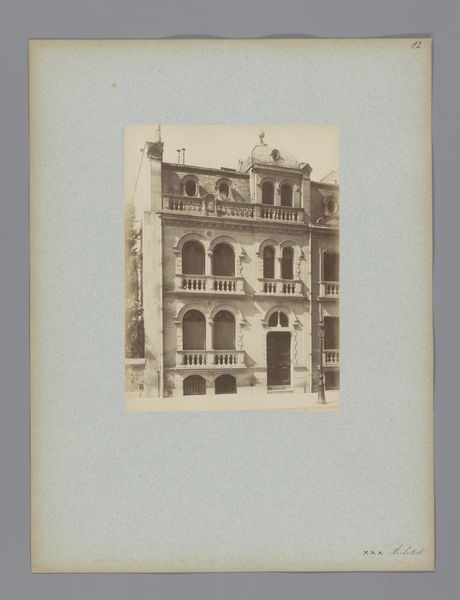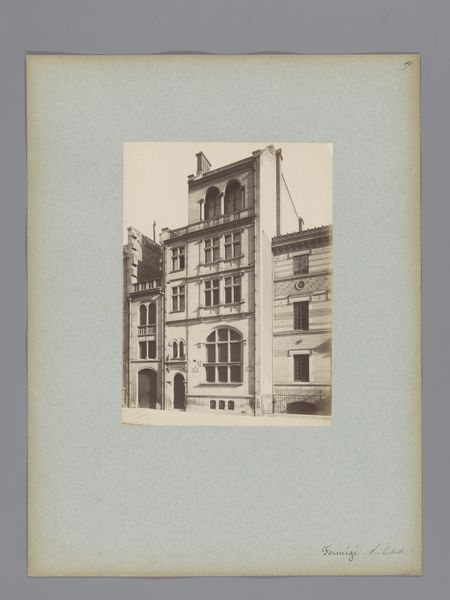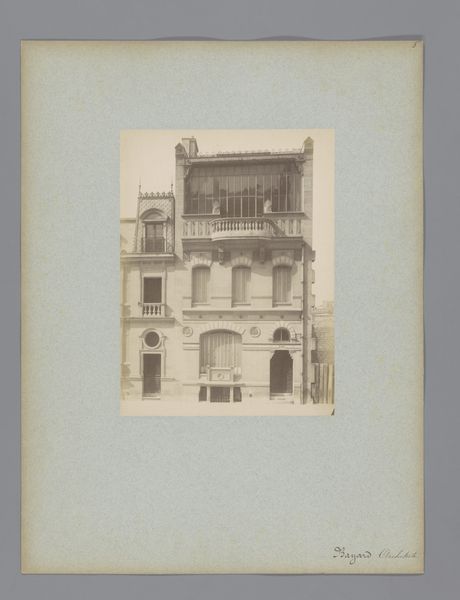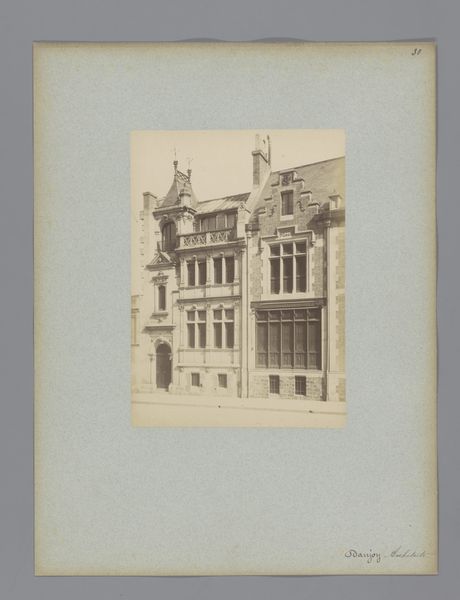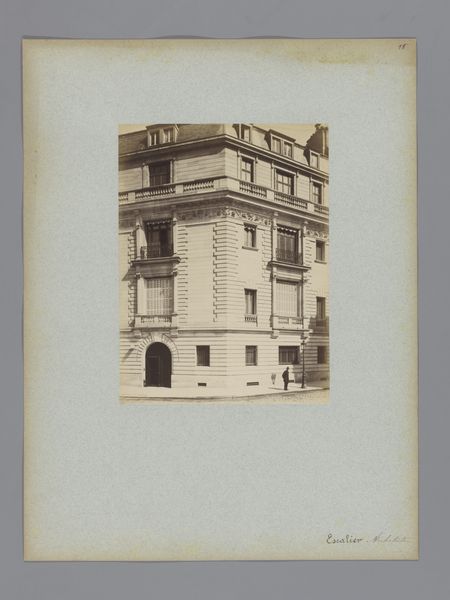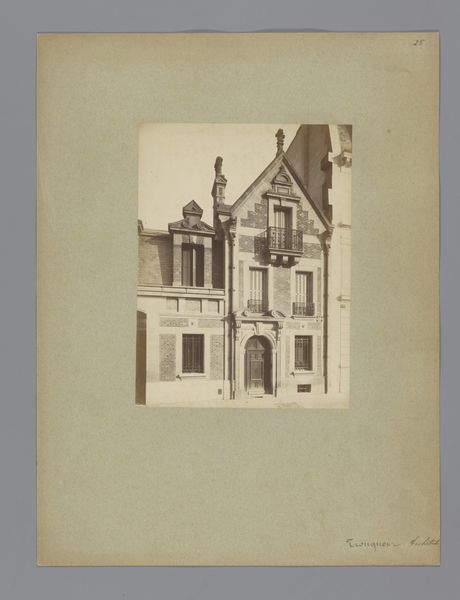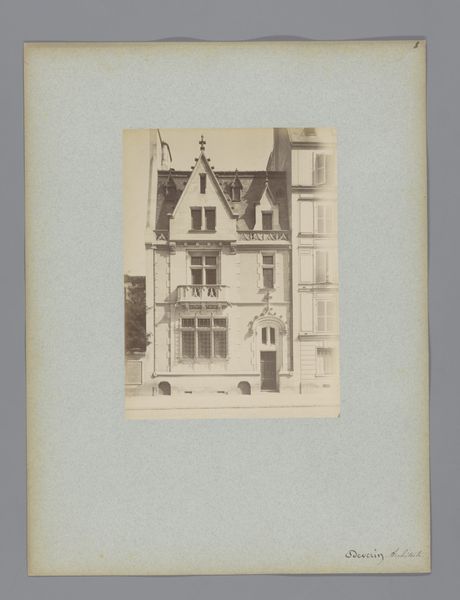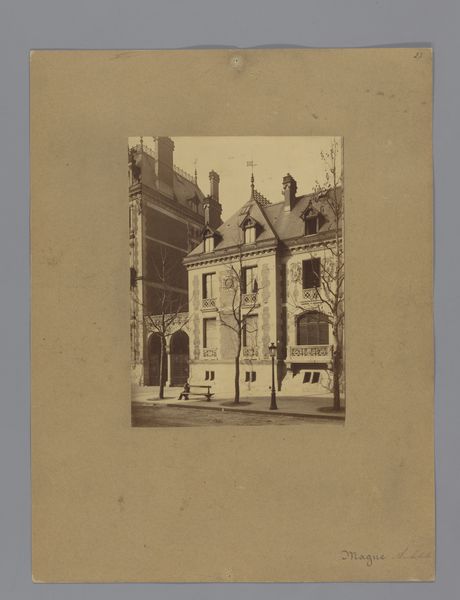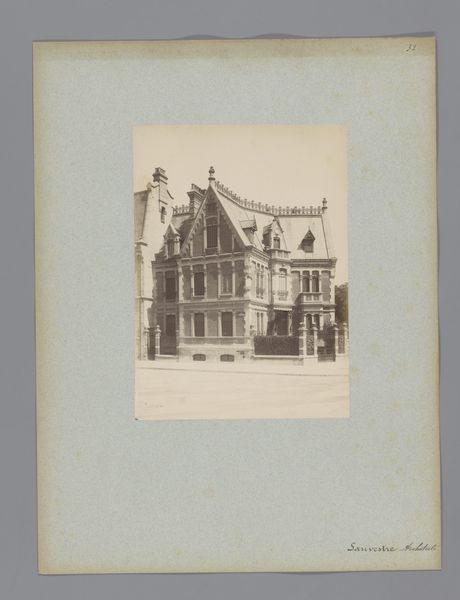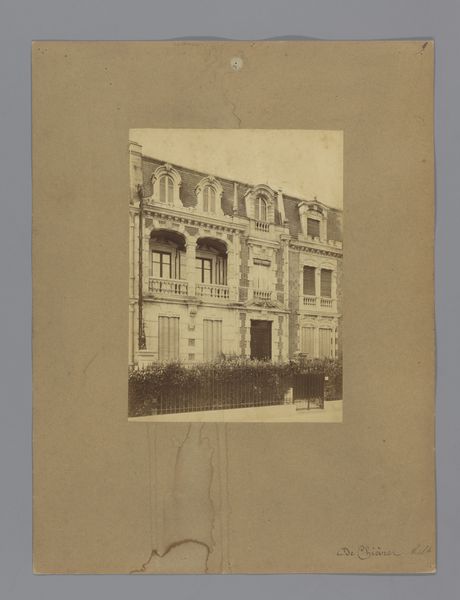
photography, albumen-print, architecture
#
photography
#
cityscape
#
albumen-print
#
architecture
#
building
Dimensions: height 229 mm, width 165 mm
Copyright: Rijks Museum: Open Domain
Editor: Here we have a photographic print from before 1880, "Façade van een woonhuis in Parijs, ontworpen door Stephen Sauvestre," attributed to Lampué et Cie. The albumen print captures a Parisian townhouse, and I'm struck by the contrast between the ornate detailing and the almost stark photographic style. What stands out to you about this image? Curator: What immediately strikes me is how this image encapsulates a specific moment in Parisian history and its visual politics. This isn't just a picture of a building; it reflects the rapid urbanization and architectural transformations happening in Paris during the late 19th century, driven by figures like Haussmann. Sauvestre, while less known, was contributing to a specific aesthetic ideal, influenced by Beaux-Arts principles. Consider, who did this kind of architecture serve? Who was being displaced as Paris modernized? Editor: That's fascinating! I hadn’t thought about it in terms of displacement. I was focused on the craftsmanship, the stone carvings above the balcony and windows. Are you suggesting that these details served a purpose beyond aesthetics? Curator: Absolutely. These details served as visible markers of class and taste. They signified who belonged, and who could afford to belong, in this new, modernized Paris. The facade itself becomes a kind of barrier, doesn't it? Visually and metaphorically defining social boundaries. It’s worth asking ourselves, what kind of societal narratives were literally being built into the city’s landscape? Editor: That’s a powerful way to think about it. I see it now - it's more than just a pretty building. It's a statement about power and privilege embedded in the city itself. Curator: Exactly! And understanding that helps us to read the city, not just as a physical space, but as a text filled with social and political meanings. Editor: I will definitely look at architecture differently now. Thank you! Curator: My pleasure! There's always more to unpack when we view art through the lens of its social impact.
Comments
No comments
Be the first to comment and join the conversation on the ultimate creative platform.
